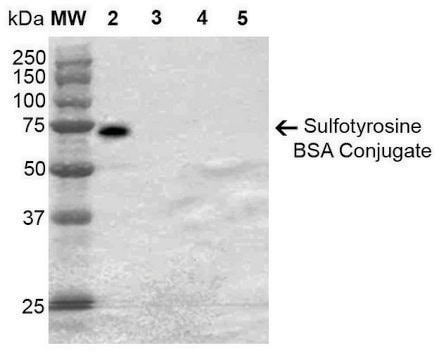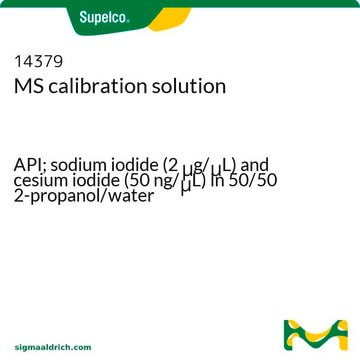F3261
[Glu1]-Fibrinopeptide B human
≥90% (HPLC)
Synonyme(s) :
Fibrinopeptide B
About This Item
Produits recommandés
Source biologique
human
Niveau de qualité
Pureté
≥90% (HPLC)
Forme
powder
Technique(s)
LC/MS: suitable
electrophoresis: suitable
Numéro d'accès UniProt
Température de stockage
−20°C
Chaîne SMILES
CC(C)[C@H](NC(=O)CNC(=O)[C@@H](N)CCC(O)=O)C(=O)N[C@@H](CC(N)=O)C(=O)N[C@@H](CC(O)=O)C(=O)N[C@@H](CC(N)=O)C(=O)N[C@@H](CCC(O)=O)C(=O)N[C@@H](CCC(O)=O)C(=O)NCC(=O)N[C@@H](Cc1ccccc1)C(=O)N[C@@H](Cc2ccccc2)C(=O)N[C@@H](CO)C(=O)N[C@@H](C)C(=O)N[C@@H](CCCNC(N)=N)C(O)=O
InChI
1S/C66H95N19O26/c1-31(2)53(85-48(90)29-73-55(100)35(67)16-19-49(91)92)64(109)83-42(26-46(69)88)61(106)82-43(27-52(97)98)62(107)81-41(25-45(68)87)60(105)78-37(18-21-51(95)96)57(102)77-36(17-20-50(93)94)56(101)74-28-47(89)76-39(23-33-11-6-4-7-12-33)58(103)80-40(24-34-13-8-5-9-14-34)59(104)84-44(30-86)63(108)75-32(3)54(99)79-38(65(110)111)15-10-22-72-66(70)71/h4-9,11-14,31-32,35-44,53,86H,10,15-30,67H2,1-3H3,(H2,68,87)(H2,69,88)(H,73,100)(H,74,101)(H,75,108)(H,76,89)(H,77,102)(H,78,105)(H,79,99)(H,80,103)(H,81,107)(H,82,106)(H,83,109)(H,84,104)(H,85,90)(H,91,92)(H,93,94)(H,95,96)(H,97,98)(H,110,111)(H4,70,71,72)/t32-,35-,36-,37-,38-,39-,40-,41-,42-,43-,44-,53-/m0/s1
Clé InChI
KPBJTGOVJLITON-OECXYHNASA-N
Informations sur le gène
human ... FGB(2244)
Vous recherchez des produits similaires ? Visite Guide de comparaison des produits
Amino Acid Sequence
Description générale
Application
- during LC-MS to avoid cross-contamination and to analyze the performance of mass spectrometer and LC-instrument
- for two-point calibration during 2D (dimensional) gel electrophoresis and protein identification by mass spectrometry of histidine (his)-Pup (prokaryotic ubiquitin-like protein) isolated from Mycobacterium smegmatis
- for two-point calibration during one-dimensional gel electrophoresis and tandem mass spectrometry (MS) for the characterization of soluble protein sample obtained from the salivary gland homogenates of Cimex lectularius
- as a standard for the correction of mass drift in data obtained from MS and MS/MS performed on peptides obtained from trypsin-digestion of protein disulfide isomerase (PDI)
Actions biochimiques/physiologiques
Autres remarques
Code de la classe de stockage
11 - Combustible Solids
Classe de danger pour l'eau (WGK)
WGK 3
Point d'éclair (°F)
Not applicable
Point d'éclair (°C)
Not applicable
Équipement de protection individuelle
Eyeshields, Gloves, type N95 (US)
Certificats d'analyse (COA)
Recherchez un Certificats d'analyse (COA) en saisissant le numéro de lot du produit. Les numéros de lot figurent sur l'étiquette du produit après les mots "Lot" ou "Batch".
Déjà en possession de ce produit ?
Retrouvez la documentation relative aux produits que vous avez récemment achetés dans la Bibliothèque de documents.
Les clients ont également consulté
Notre équipe de scientifiques dispose d'une expérience dans tous les secteurs de la recherche, notamment en sciences de la vie, science des matériaux, synthèse chimique, chromatographie, analyse et dans de nombreux autres domaines..
Contacter notre Service technique










![[Met5]Enkephalin acetate salt hydrate ≥95.0% (HPLC), powder](/deepweb/assets/sigmaaldrich/product/structures/158/699/80b4b65b-7e48-49a2-ba61-4433cf1f375c/640/80b4b65b-7e48-49a2-ba61-4433cf1f375c.png)

